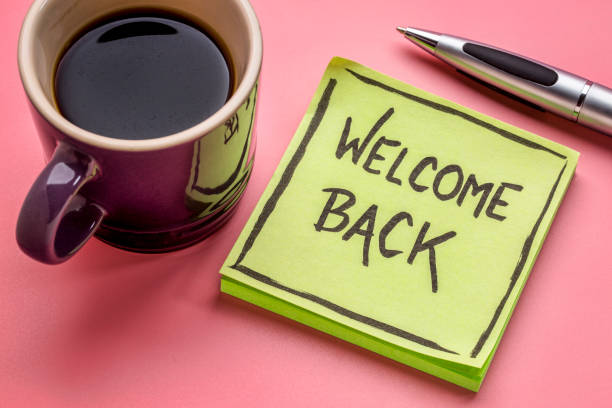Encouraging A Return To The Office

welcome back - handwriting on a sticky note with a cup of coffee
Remembering that working and going to the office feel like a normal part of life – with benefits and challenges – will help you build resilience to stress and change. This means you will be at the office when more people get vaccinated and when employers after more than a year return workers to work.
After 18 months of remote work, more and more companies return their employees to work again. As workers return to work from home after a year of work, many offices and companies are looking for ways to make it easier for their employees to return and reduce stress.
Hybrid work, in which employees divide their time between home and office, is for many a way into the future. After a few months of remote work, employees often fall back into a home office routine. For employees to do their jobs during the pandemic, it is better to agree to a hybrid work schedule than to force people back into the office full-time.
With more and more municipalities welcoming workers back to their respective offices following recent positive news of vaccines, it is advisable to keep a few tips and best practices in mind to tell your employees about your plans to return to work. The ultimate success of any plan to return to the office depends on understanding the needs of employees and the type of work they do. This includes being aware of the status of COVID-19 in your community and making sure your employees feel safe when they return to the office.
As an executive, you need to get your employees back in the office and while many are reluctant to return, there are a few ways to inspire employees to swap their soft pants for lunch together. For starters, workers who commit to remote work might see a return to the office as a mandate for punishment or a desire for management oversight. To ease their fears, outline why you want the team to share the space.
Employees’ adaptation to the new normal in the office will be aided by flexibility, open communication, and adherence to best practises. Take advantage of the inherent benefits of the office and build on them with new technologies, strategies and amenities to inspire and motivate your employees for the new season. You can assist your staff feel comfortable returning to work without releasing thousands of stock options if you plan ahead, communicate clearly, and have an open mind.
In our executive coaching practice, as we have seen, there are four things managers can do to help their employees make the transition back to office. Managers can use the tactics listed above to prepare their staff for the complex emotions that come with starting a new job. For starters, employees must feel that they do not face consequences if they express their needs or hesitate to return to the office.
When there are fewer people in the office, employees can spread out, keep their distance and return to a normal workflow. Each employee appreciates the office for different reasons, so satisfying the needs of a variety of spaces can encourage frequent use.
It can make friends and increase the likelihood that employees will continue to return to the office. If your normal working environment does not allow for socializing and discussion outside working hours, you should consider allowing activities for people outside the office. Team building activities are a great way to welcome people back to the office and have fun.

Every employee has a unique reason to want to return to the office and different expectations of what the office has to offer. With time, a little fine tuning and a lot of feedback you can create a new office experience that brings back reluctant employees. As soon as employees feel more comfortable in the office, they will be more eager to return to it.
Many (29%) value remote work flexibility and security so much that they say they would quit their job if their employer insisted on returning to the office. If more people are vaccinated against COVID-19 and if people return to work and find that their working environment changed without saying anything about why it changed – and whether or not the virus infected them – many will get used to remote work and even prefer it.
We know that returning to work is not about isolation, but about protecting people from collaboration, innovation, and human connectedness. Remember that employees work best in shared offices.
For example, managers should provide detailed information about safety protocols and expectations in the office before returning to the office to remove health concerns and allow nervous employees to visualize their return. One of the most effective means of enabling people to raise their concerns in a non-threatening and productive environment is to discuss the new context of collaborative work when a team returns to offices.
Remote work policies can help you set expectations for employees and managers when it is permitted to work remotely and when it is necessary to inform employees of the need to reserve a job when they plan to return to the office. If you have cabins in your office, you can make sure your employees come with welcome branded corporate gifts such as custom promotional pens, drink bottles and a clean, prepared cabin. With a Scavify app you could do a fun scavenger hunt in the style of a team building activity or other team building event to create new memories, help people work on their problem-solving skills and reconnect with the team after a break in the office.





